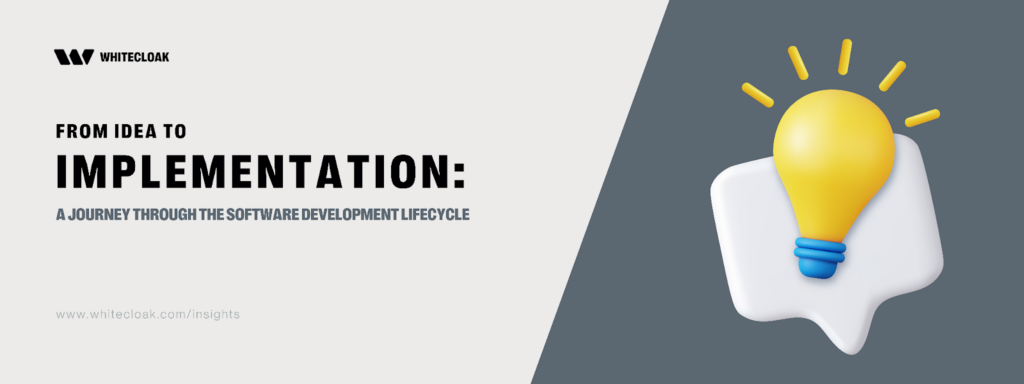What are the Steps in the Software Development Life Cycle
Ideation, Conceptualization, and Requirement Analysis
The software development life cycle starts with ideation and conceptualization. In this step, stakeholders identify the problem to be solved and provide a set of goals and objectives for the software development project.
This phase also revolves around key activities like market research, collecting user feedback, and determining functional and non-functional requirements.
Planning, System Design, and Architecture
This stage involves planning and creating a blueprint for the software solution based on the requirements established in the previous stage. System architects and designers help translate the information gathered from the stakeholders into a detailed blueprint of the system architecture, database design, and user interface layout.
Coding and Development
The coding and development stage brings the blueprint to life. The development team writes and develops code for the software based on the design specifications, programming language, and framework that was established in the previous planning, system design and architecture phase.
Testing and Quality Assurance
The software is being subjected to various forms of testing like functional, performance, security, and usability testing to root out and identify bugs and validate the functionality of the software with respect to the defined requirements. Thorough documentation of testing processes, results, and identified issues is crucial as this documentation helps serve as a reference point for future iterations and development of the software.
Deployment and Release
Once the software has completed rigorous testing and the bugs have been fixed the next stage is to deploy and release the software to a live production environment. The deployment and release stages have several steps that include the installation of the software to production software and the configuration of the production environment.
Maintenance and Iteration
The maintenance stage involves making necessary changes, modification and updating of the software to enhance its performance and maintain its stability and health. This involves fixing bugs and defects discovered in the software after deployment as well as conducting preventive maintenance by updating code and replacing deprecated features.
Following the stages in the software development life cycle (SLDC) and implementing its best practices ensures a streamlined, efficient, and productive workflow in the software development process.
White Cloak’s Role in Helping Businesses in Software Development
White Cloak is a leading software development solutions provider and we help businesses navigate through the complexities of the software development lifecycle to produce high-quality and award-winning software. By leveraging our expertise and services, businesses can focus on their core operations while ensuring their software projects are in capable hands.
